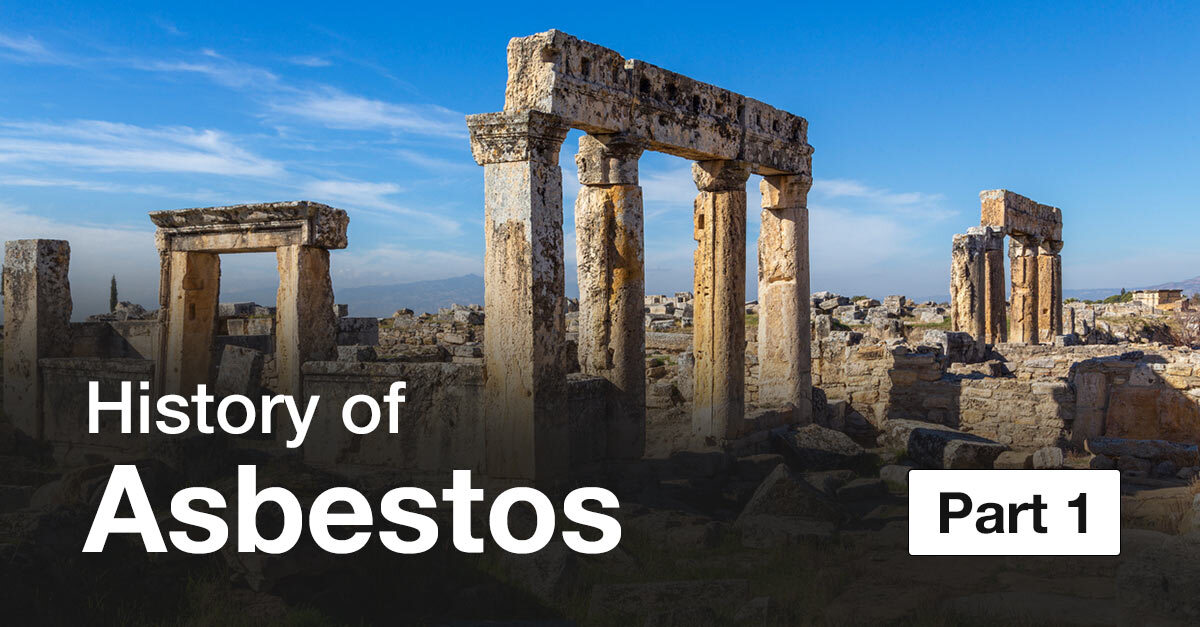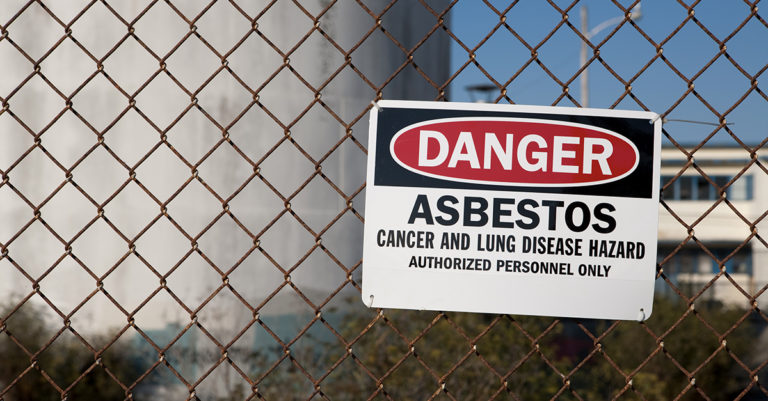
It’s hard to believe asbestos was only recognized to be toxic a little over a century ago. This naturally occurring mineral was already being mined when the Great Pyramids were built, and for thousands of years, humanity handled it without the slightest of precautions.
Today, we know asbestos is highly dangerous and the primary cause of mesothelioma, one of the most lethal cancers. That bit of knowledge is a privilege of the scientific and medical understanding in the modern era.
Despite decades of research on how dangerous it is, asbestos remains legal to use in the United States. Millions of people are needlessly exposed to asbestos every year, and efforts to fully ban the substance gain little traction.
In this five-part series, we’re going to use a bit of history to address:
- What asbestos is
- Where it was widely used and why it was used
- How it is still responsible for the deaths of up to 40,000 Americans each year
- Its current use and distribution in the U.S.
We’ll start in ancient times and then move forward to explore how successive cultures made use of this mineral.
By the last installment, we’ll have mapped out the life and history of asbestos — and how timeless motivations like greed, power and ignorance were enough to sustain the mineral’s use and endanger millions exposed to it.
Asbestos in the Bronze Age
Evidence suggests the first asbestos mines were built in Greece and Cyprus around 3,000 B.C.E., predating the construction of the Great Pyramids of Giza by 500 years.
It’s not clear how much the ancient civilizations knew of the toxic properties of asbestos. Being an era of slavery and short lifespans, it’s possible those in positions of power simply did not care about the health and well-being of enslaved miners.
Throughout history, however, many different societies were captivated by the mineral’s seemingly magical nature. As a fibrous mineral, asbestos was woven into fabrics to create a fire-resistant cloth. This seemingly magic property made asbestos into a coveted material for ceremonial rituals as flame-resistant burial shrouds conveyed spiritual immortality.
While the ancient Egyptians embalmed pharaohs with asbestos to provide them with a kind of fiery resilience, the ancient Persians used a fire-resistant asbestos cloth to contain and preserve cremation ashes. It’s also believed that the Greeks and Cyprians used the mineral in the weaving of hats, shoes and candle wicks.
Similarly, strong evidence suggests that the ancient Scandinavian people of modern-day Finland used asbestos in pottery and hut construction.
The First Histories: Asbestos in Roman and Greek Writings
History became less cloudy in the Greek and Roman eras, when the written word, papyrus scrolls and complex postal networks allowed for more texts to survive into modern times. By the first century A.D., many of those ancient ceremonial practices involving asbestos were well documented by Roman historians.
The Roman author Pliny the Elder described in his writings a linen cloth that was supposedly used by the ancient Greeks. Called “abestinon,” the incombustible fabric possessed the tantalizing ability to ward off magic spells.
Years later, Pliny’s nephew took a more rational approach to the study of these ancient materials. He reported on a detrimental health condition among enslaved people who mined asbestos — and even discouraged the purchase of those who had worked in these mines, claiming they tended to “die young” from a range of lung ailments.
The morals of the age, it seemed, still belonged to a more ancient one.
A “Magical” Reputation Across Cultures: The Birth of a Party Trick
A few centuries later, asbestos was still revered for its miraculous properties but the understanding of its health impacts remained limited.
Writing in the fourth century A.D., the bishop of Alexandria, Egypt referred to a mysterious substance from India that could be woven into fabrics to cheat death.
The bishop Athanasius even likened asbestos to Christ’s conquest of death, writing:
“The natural property of fire is to burn. Suppose, then, that there was a substance such as the Indian asbestos is said to be, which had no fear of being burnt, but rather displayed the impotence of the fire by proving itself unburnable. If anyone doubted the truth of this, all he need do would be to wrap himself up in the substance in question and then touch the fire.”
As Rome began to collapse and new empires vied for power in the vacuum that formed, asbestos lost its ceremonial significance and became more of a novelty. Asbestos cloths and materials were often used as a sort of party trick, meant to impress travelers from foreign lands.
Eventually, the industrial appeal of asbestos began to fade. With the collapse of Roman currency, estates suddenly lacked the means to mine asbestos on a practical scale. At the same time, the literature on the mineral became confusing, with scribes having difficulty identifying the mineral’s source — some referencing mines in India or others salamanders in Mongolia.
Asbestos in the Middle Ages
The Middle Ages saw the rise of feudalism, a new economic system that found novel uses for asbestos. All of a sudden, this seemingly magical mineral was being used for decidedly non-magical purposes, like building homes, crafting armor and perfecting siege weaponry.
The material took on a terrifying purpose as medieval conquerors used it to create flaming bags of tar laced with asbestos that would be catapulted over the walls of an enemy castle.
In our next installment, we’ll step into that medieval mindset and explore an era that saw asbestos evolve from a ceremonial novelty into a weapon of war.
Visit our next installments on the history of asbestos by clicking on any of the links below:
- History of Asbestos, Pt. 2: Asbestos in the Middle Ages
- History of Asbestos, Pt. 3: Asbestos in the Industrial Age
- History of Asbestos, Pt. 4: Asbestos From Its Heyday to the Era of Regulation
- History of Asbestos, Pt. 5: Asbestos in the Present Day
As a national mesothelioma law firm, Simmons Hanly Conroy has helped thousands of asbestos exposure victims and their families secure justice for their illnesses.
Contact us now to learn more about your legal options for free.




